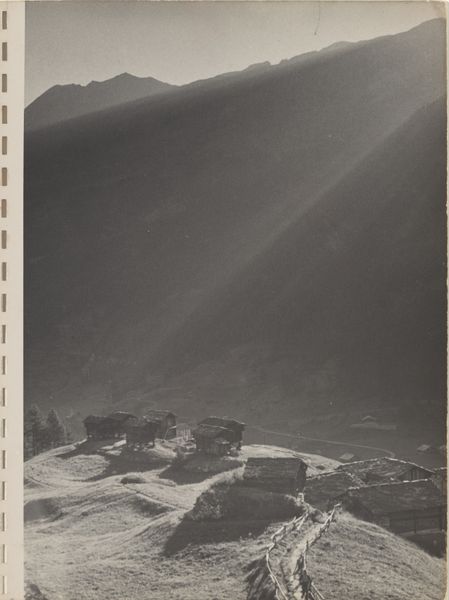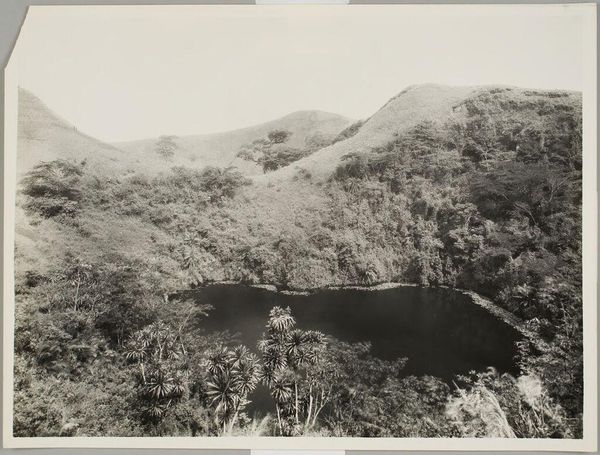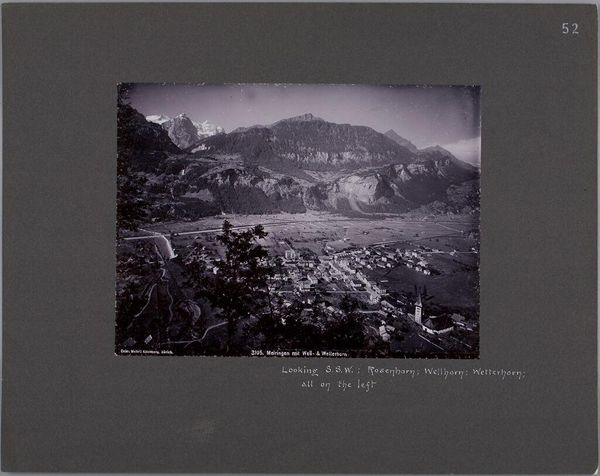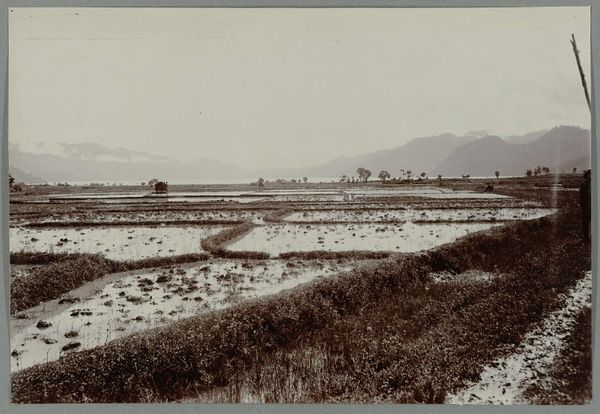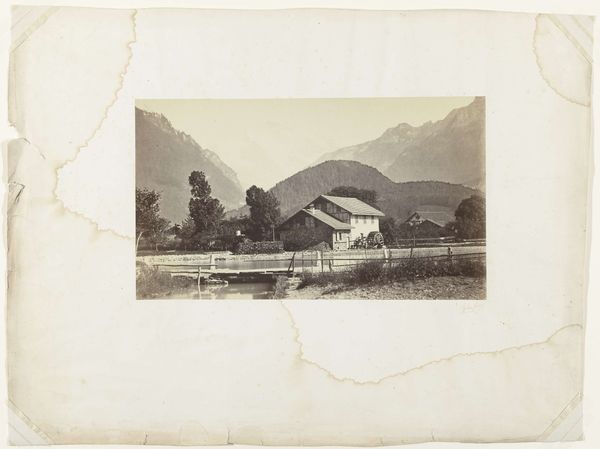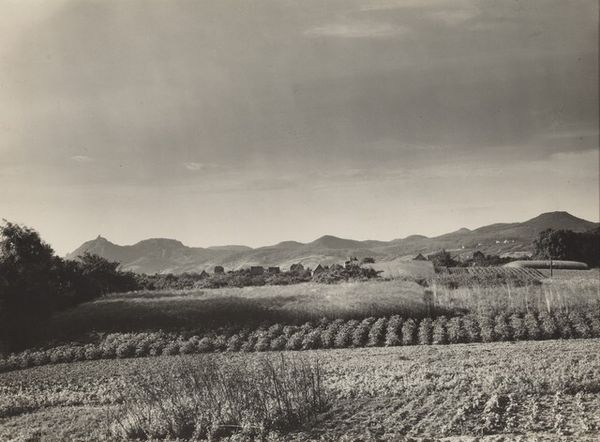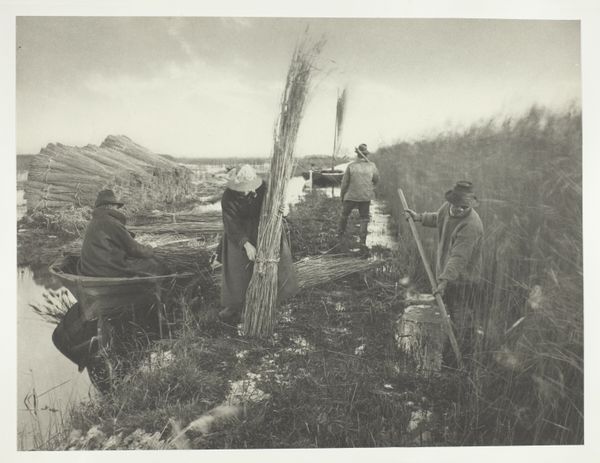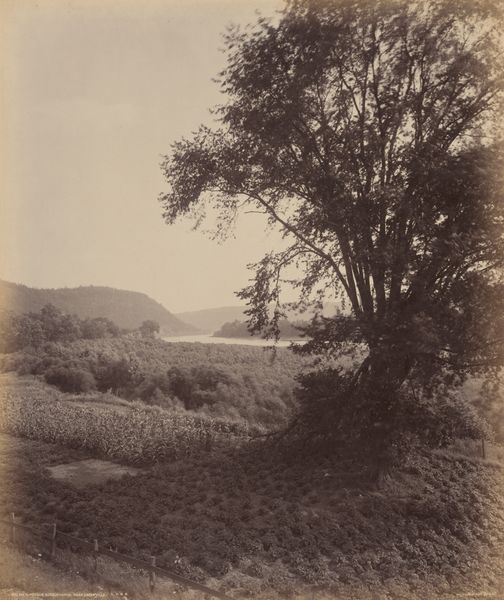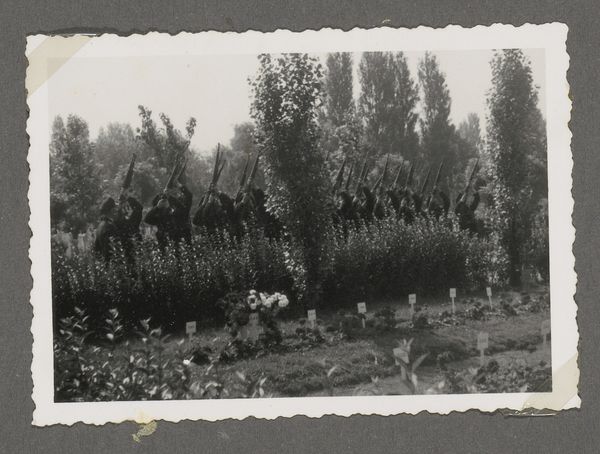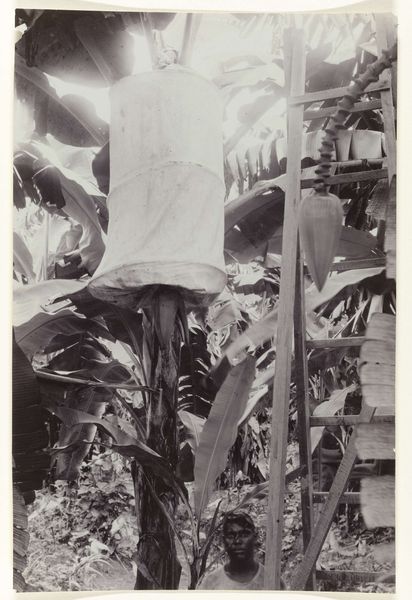
Dimensions: sheet (trimmed to image): 5.8 x 5.5 cm (2 5/16 x 2 3/16 in.)
Copyright: National Gallery of Art: CC0 1.0
Editor: Here we have Robert Frank’s gelatin-silver print, "Cornfield, Zurich," taken sometime between 1941 and 1945. The first thing that strikes me is the stark contrast between the sharply focused corn stalks and the more distant, blurred landscape. What are your thoughts on the visual impact of this composition? Curator: It is vital to acknowledge how the photographic method is crucial here. The deployment of a gelatin-silver print captures an incredible tonal range which enhances our appreciation of the geometric forms in space. Focus your gaze on the fore, middle, and backgrounds. Notice how the textures in each add to our understanding of spatial organization within the artwork. Consider the way the photographer controls and defines these formal relationships within the composition. Editor: I see what you mean about the tonal range adding to that. I’m also noticing how the almost chaotic foreground contrasts with the serene backdrop. Curator: Precisely. How might you analyze the relationship between the texture of the cornfield and the smoother surfaces of the lake and mountains beyond? Think in terms of semiotics. Editor: Well, the rough texture almost feels like a barrier, making the idyllic landscape seem inaccessible. Does that suggest a reading? Curator: The foreground thus performs a dual function; as framing and a form of obstruction. It invites deeper exploration into the formal relationship. The photographer asks us to look closely at how nature presents itself when light interacts with surfaces, and shapes emerge out of it. Editor: This close analysis has really shifted my perspective from a casual viewing to a detailed understanding of the work’s composition. Thank you! Curator: You're welcome. Considering formal attributes heightens one's artistic sensitivity.
Comments
No comments
Be the first to comment and join the conversation on the ultimate creative platform.

